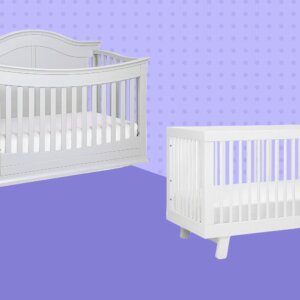Welding and fabrication are closely related processes that are essential in the field of metalworking. Welding and fabrication is the process of creating metal structures and products. It involves various techniques such as cutting, bending, and welding. Metal fabrication is used in multiple industries, including construction, automotive, and manufacturing.
Welding is a process that involves joining metals together using heat and pressure. This article will discuss the most common welding and fabrication problems faced by welding shops in Newcastle and how to solve them. We will also provide tips on how to avoid these problems in the first place. Welding is used in a wide range of applications, including construction, manufacturing, and repair work, and can be a complex process that requires skill and experience. However, with the right knowledge and techniques, welding and fabrication can be done effectively and efficiently in a welding shop in Newcastle.
Common Welding Problems and Solutions
Porosity
Porosity is a welding defect when gas is trapped in the weld. This can weaken the weld and make it more susceptible to failure. To avoid porosity, ensure the welding area is clean and free of debris or contaminants. Use the correct shielding gas and ensure the gas flow rate is correct. If porosity does occur, you can grind out the affected area and reweld it.
Cracking
Cracking is a common welding problem that can occur due to high stresses on the weld or poor welding technique. To avoid cracking, use the correct welding technique and ensure the weld is not under too much stress. If cracking does occur, you can try to repair the affected area using a welding technique that is less likely to cause cracking.
Incomplete Fusion
Incomplete fusion occurs when the weld does not fully penetrate the base metal. This can weaken the weld and make it more susceptible to failure. To avoid incomplete fusion, use the correct welding technique and ensure the welding area is clean and free of debris or contaminants. If incomplete fusion does occur, you can grind out the affected area and reweld it.
Undercutting
Undercutting is a welding defect when the base metal is melted away from the weld, leaving a groove or depression. This can weaken the weld and make it more susceptible to failure. To avoid undercutting, use the correct welding technique and ensure the welding area is clean and free of debris or contaminants. If undercutting does occur, you can try to repair the affected area using a welding technique that is less likely to cause undercutting.
Common Welding And Fabrication Problems and Solutions
 Bending and Forming
Bending and Forming
Bending and forming are common fabrication processes that can present certain challenges. One of the most common problems is spring back, which occurs when the metal springs back after it has been bent. To avoid springing back, use the correct bending technique and ensure the metal is not under too much stress. You can also use a press brake to ensure accurate and consistent bends.
Cutting
Cutting is a common fabrication process that can also present certain challenges. One of the most common problems is material distortion, which occurs when the metal is heated during cutting. To avoid material distortion, use the correct cutting technique and ensure the metal is properly supported during the cutting process.
Warping
Warping is a common fabrication problem when the metal is heated and cools unevenly. This can result in the metal bending or warping. To avoid warping, use the correct welding technique and ensure the metal is supported correctly during welding.
Tips for Avoiding Welding and Fabrication Problems
Properly Prepare The Materials
Before welding or fabrication, it’s essential to ensure the materials are clean and free of contaminants such as oil, rust, or dirt. This can be achieved through cleaning or grinding, depending on the material.
Use The Correct Welding Process
Different welding processes are suitable for different materials and applications. Ensure you use the correct welding process for your project to avoid problems such as warping, cracking, or weak welds.
Use Proper Welding Techniques
Proper welding techniques include maintaining the correct arc length, travel speed, and welding angle. Using the right techniques can prevent problems such as undercutting, porosity, or incomplete fusion.
Ensure Proper Ventilation
Welding produces hazardous fumes and glasses, so it’s crucial to ensure proper ventilation to protect the welder’s health and prevent welding problems such as porous welds or incomplete fusion.
Inspect The Welds
Regular inspection of the welds can help detect problems such as cracks, porosity, or incomplete fusion early on, allowing for timely repairs and preventing more significant problems.
Use High-Quality Materials
High-quality materials can prevent welding problems such as cracking, warping, or weak welds. It’s also important to use materials suitable for the specific application.
Follow Welding Codes And Standards
Welding codes and standards exist to ensure that welded structures are safe, reliable, and meet the required standards. Following these codes and standards is important to avoid welding problems and ensure compliance.
Following these tips, metal fabricators can avoid welding and fabrication problems, produce high-quality welds, and create reliable welded structures.
Final Thoughts
Metal fabrication and welding are important processes used in various industries, but they can present certain challenges, such as porosity, cracking, incomplete fusion, spring back, material distortion, and warping.
However, these problems can be avoided by properly preparing the materials, using the correct welding process and techniques, ensuring proper ventilation, inspecting the welds, using high-quality materials, and following welding codes and standards. Following these tips, you can produce high-quality welds and create reliable welded structures. It is crucial to stay knowledgeable about the most prevalent issues that arise during welding and fabrication and how to overcome them to ensure the success of your metalworking projects.


